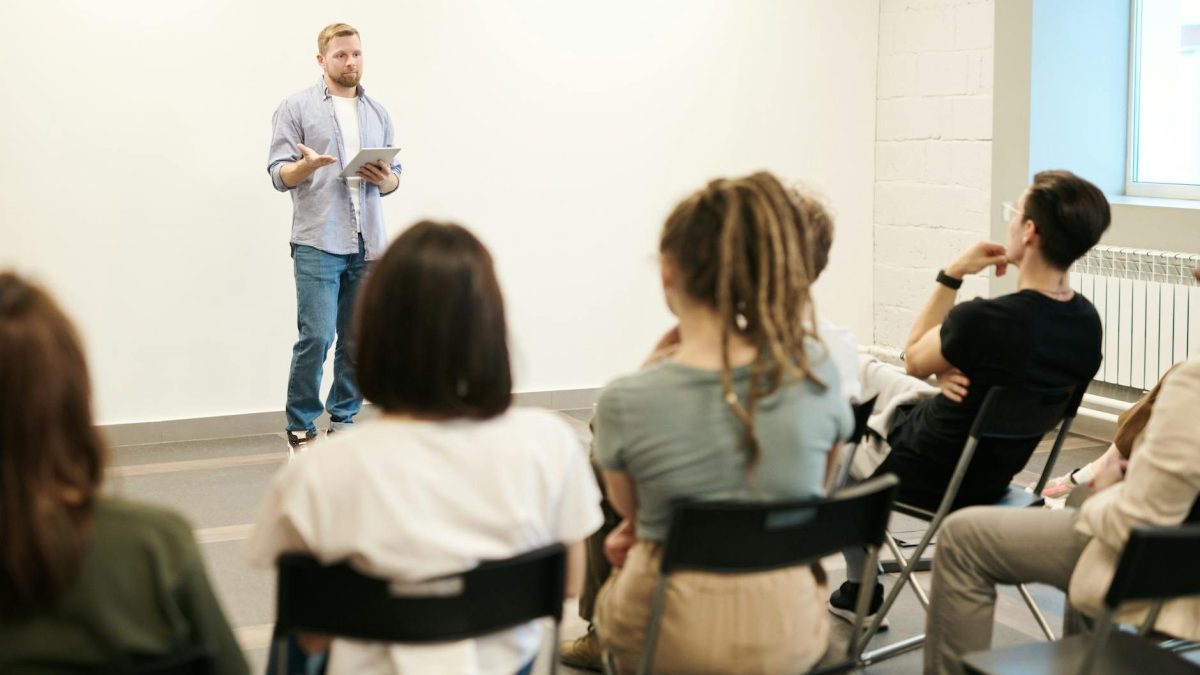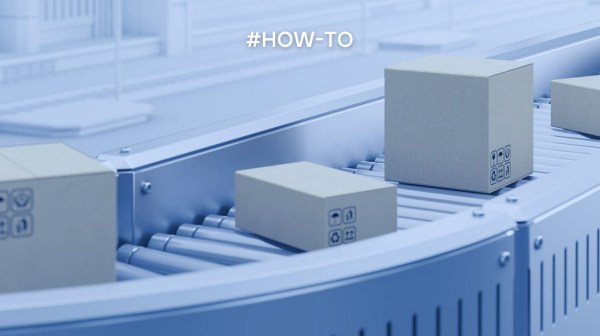How to manage our public speaking
A phrase that I liked and that made a difference to me when it comes to presenting content is: ‘We often risk our lives in the conversations we have, but also in the ones we don’t have’. So when we go into an auditorium to engage in a conversation, bearing this sentence in mind, we must know that public speaking creates opportunities between the speaker and the audience.
So the question is: How do we have to speak to create opportunities?
In a presentation there are three key moments:
- 1) What do you, as a speaker, want to be known when you speak?
- 2) What does the audience feel and do about the topic you are presenting? Keep in mind where you want to take the audience and what their starting point is in relation to the content you are going to present.
- 3) Consider where you want to take the audience and what their starting point is, in relation to the content you want to present.
In other words, what is it that you want to show so that people know where you want to take them in that conversation, so that after listening to you, they feel and do what they have heard. In short, identify where the audience is and where you want to take them.
We need to know as speakers, how far we will take this conversation to achieve a common interest of those who listen to us.
Have a relevant idea to be able to connect with the audience. In this case I mean, not to arrive with arrogance to expose a topic and to be in that role of ‘Know-it-all’, but to have prepared and studied the material previously, before exposing it, to generate a state of trust between the speaker and interlocutors. In this way, the questioner establishes this opportunity for trust, which for the speaker is the key to defining more clearly what the audience is like.
It is here that a spectrum of trust and opportunity opens up between the speaker and the listener, and it is here that the speaker is often remembered for the impact of his or her speech on the listeners. A bond of trust is established, which generates that identification of the memory, either of the subject that was spoken about, or by clearly identifying the speaker.
Once you know where you want to take your audience, you study the content well and then design the presentation.
Before we present and go on stage, we need to work on and be skilled in these four elements:
- 1)Have an intention: keep in mind that we do not communicate for the sake of communicating; behind a presentation there must be something more. Have the intention to share a certain topic. If I want to sell, detail, or inform about something, I must be very clear about my intention and see very well what the purpose of our speech is.
- 2) Have an objective, with an indicator that allows us to know if we have achieved the objective. This indicator tells us if we have been good communicators and if we have achieved the objective. We will notice if people applaud us, if they approach us at the end of the speech, or the number of contacts achieved at the end of each presentation. These will be the indicators that will help us to realise if they liked what was heard.
- 3) Understand that the voice has power: connect with what is being said, enter into a state of emotionality that allows us to speak and transmit in the same channels.
- 4) To be authentic in our speech: By this I mean to speak with our own voice, with our own style, according to who we are, to have our own characteristic style, and that no one else has it. That voice should connect with the message we want to give, imbuing it with our own authenticity.
Emotionality
Emotionality, when it comes to connecting with our audience, plays a very important role in leaving a mark on the content we have dealt with.
For this, in any speech, it is necessary to connect with the eyes of those to whom we are speaking, to tell our story or our own lived experience.
When you want to give relevance to a specific topic, do not look at the audience in general, look at someone specific, because if we do not do so, the idea will be dissipated in a general overview. Powerful sentences should be anchored in one person.
Speaking slowly will give you the confidence that you are being understood, not taking it for granted that you understand everything you say, so it is important to be slow in your speech, for those who do not know what you are talking about. Allow time for the information to be processed. Modulate the voice with higher tones, in those moments when we want to attract attention, make spaces for silences, to catch and convert the speech into intrigue.
These spaces of silence should not be too long, but in the right measure, avoiding boredom in the audience.
It is also necessary, in order to emphasise emotionality, to ask questions, but only if you already know the audience, and the speaker feels comfortable with his audience, as this can play against him, and divert his speech to the opposite place to the one he wants to reach.
Authenticity generates trust, finally nobody knows more about the subject than the speaker has to say, he/she has unique information, on which nobody can judge a priori. So authenticity is the personal stamp that each speaker puts on this information, and it will be the indicator that will highlight the content, so that it will be remembered as such.
Having our own story, that characteristic we have when we relate a speech, referring to our way of being, making faces while we do it, the tone of voice we use or the pauses we make, will give us that authenticity that will make us stand out from the rest.
I can define that there is no recipe for our presentations to be successful, but with these indications we can define an idea of what are those minimum steps, so that we can get on stage and make speeches or presentations of great impact.
It is important to detail that when we know all these tips, we will get the idea that we are communicating in a propitious way. This will be when we learn and execute our storytelling, unconsciously.
When we train and practice it more, it will come out unconsciously, without having to think about what we want to say. We will then be able to define that we will be able to give a good presentation.
In the case of giving emotionality to the speech, let’s avoid generating a flat speech, let’s listen to ourselves, let’s record ourselves, perfecting those melodic curves in our voice tones will be of great help.
Slow down when you are going to say something important. Pause, raise your voice to emphasise what you want to emphasise, use simple words so that everyone understands.
The message should be understood by a specific group of people, as well as a child, and should be simple in the words used.
The speech is much more emotional than logical. This is why it is also very important how we communicate bodily. How we move on stage, managing the social space. Also when we get off the stage, if we do, it is because we will need more connection with the audience.
Understand that fear and nerves before making a presentation is completely natural, as human beings experience two great fears in their existence, one is fear of death and the other is fear of public speaking. When we do so, we are being subjected to the judgement of all those people who listen to us and watch us, thus we are confronting our ego.
This ego does not accept judgement from others, and because of the excess of analysis in our brain, we end up paralysed. This is why we feel so many nerves and so much fear.
It is also important to take into account our body language on stage, not to touch our face, not to cross our arms, not to move too much from one side of the stage to the other, as this will give an idea of insecurity or nervousness to those who are watching us.
The forbidden before a speech
- ‘I am very excited’, the emotionality should be through the message, or the stories that are going to be told, but not from my emotions, i.e. not to make the obvious obvious obvious.
- ‘Before we start’, the speech starts from the moment you get on stage or decide to start giving the presentation.
- ‘Well, let’s start’, we start as soon as we are seen standing or going on stage.
Exercises to connect with ourselves before going up to present
Don’t tense up because you feel nervous, look for relaxation exercises or breathing exercises that connect you to the moment. That make us feel more comfortable or calm. Breathing from the stomach, like babies do. Doing this before presenting will generate dopamine in our brain, and we will feel a sense of calmness.
If other activities such as singing, dancing, listening to music or meditating give us peace of mind, these are also welcome options when presenting.
When we connect visually with our audience, it is preferable to look for a peaceful, friendly or smiling face, as anchoring our gaze on a serious person will give us visually and for our brain, a wrong context. We will identify that look with a discontent in our speech, and the truth is nothing is personal, that person may be with a particular problem, which has nothing to do with the content we are exposing at that moment.
It is convenient that we always rely on those friendly or smiling looks, those who celebrate us in a joke or laugh at something we say in our speech, giving us confidence with what we want to communicate, accompanying us with their gestures and connecting with our emotions, thus giving us more confidence.
The worst thing that can happen is that we do not take up this challenge, a challenge that will offer us the power to improve ourselves more and more in what we want to communicate, highlighting those points in which we can improve.
Conclusions
At the end of this article, I leave you with this conclusion to encourage you to become great speakers:
‘We all have something good to communicate, a story to tell, a message to move. With authenticity in each story, we will make a big part of us give our speech our own stamp, and with a genuine message.








